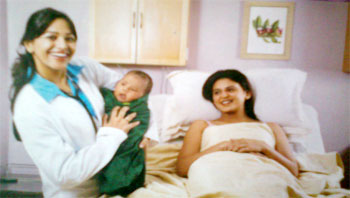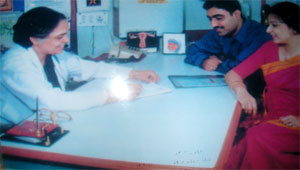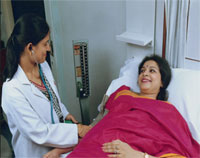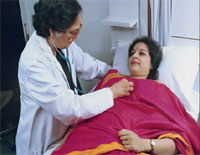Over View
WELCOME TO ANTENATAL CLASSES

Pride of parentinity
Advantages of Antenatal Classes
- Better Informed
- Familiar Team
- LSCS
- Pain
- Smooth Journey
9 Months Wonder
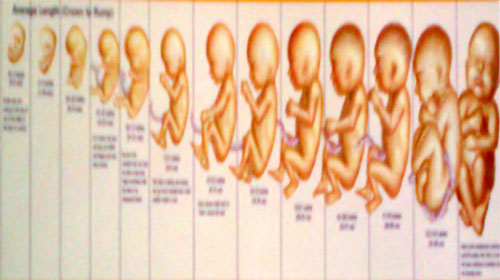
How does the Baby develops in the women womb?

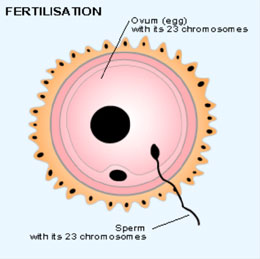
Fertilization 2 Week from LMP
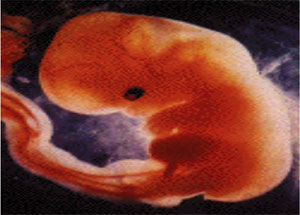
Fertilization 2 Week from LMP

16 Weeks 6 - 7 " 100 gm
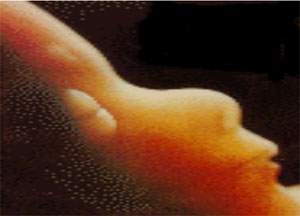
20 Weeks 10 - 12" 300 -500gm

24 Weeks 11 -14 " 550-800 gm
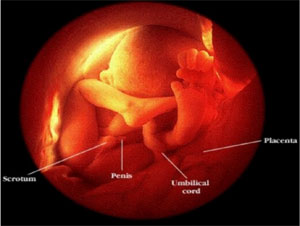
32 Weeks 16 - 18" 2000 -2300gm

Full Term 20 " 3200-3400 gm
How to Calculate EDD (Dating)

1st Example
LMP- 1st Jan
Add 7 days = 8th Jan
Minus – 3 months
Dec Nov Oct i.e. = 8th Oct
2nd Example
LMP- 30th May
Add 7 days = 7th June
Minus – 3 months
May April March i.e. = 7th March
Dating
- Gestational Age - Dating by LMP (Regular Periods)
- USG Dating - ( Irregular Periods )
High Risk Factor
Detect High Risk Cases for timely intervention. To save the life of mother and child.
Before Pregnancy
| Age |
: |
Less than 18 yrs over 35 yrs. |
| Height |
: |
Below 145 cm |
| Weight |
: |
Below 40 Kg |
| Parity |
: |
Primi or Grandmulti (4 or more previous children) |
Birth Interval
|
: |
Less than 2 years |
Previous History
- Previous Abortion / Premature or Still born babies
- Previous difficult delivery or caesarian section, haemorrhage after delivery
During Pregnancy
- pallor or Anameia (Haemoglobin below 10 gm)
- Poor Weight Gain.
- Swelling of Hands , Legs and Face.
- High Blood Pressure.
- Diabetes.
- Jaundice.
- Twins, Breech, Transverse lie
- Prolonged Pregnancy
Weight Gain 10 kg
Recommended Weight Gain according to BMI
| Age |
|
Weight gain |
| < 19 |
Under Weight |
12 - 18 kg |
| 19 - 26 |
Normal |
10 - 12 kg |
| 26 - 29 |
Over Weight |
7 - 11 kg |
> 29
|
Obese |
7 kg |
| Twins |
|
|
| Triplet |
|
23 kg |
Stages of Pregnancy & weight Gain
Maximum Gain 24 - 34 Week
Antenatal Care
Our Aim : To ensure successful outcome of pregnancy with minimum risk.
Preconception Councelling
- Ideal Councelling for all couples.
- Detailed Medical History of both partners and their families.
- Identify risk Factors.
- Preconceptional Folic Acid
- Control medical illness if any, change to save drugs.
- Special tests if required eg. Diabetes Mellitus, Thyroid DS, Hypertension.
First visit as early as possible :
- Diagnosis and Confirmation
- Urine Pregnancy Test
- Early Scan - Viability, Dates, number
- Identify Risk Factor
- Investigation
- CBC
- Rubella , IgG, IgM
- TSH
- Blood Group and RH Factor
- Blood Sugar Fasting
- Hb Electrophoresis
Treatment Less than 12 weeks
- Folic Acid
- Symptomatic Rx in High Risk Cases
- Fortnightly Visits
Subsequent Visit
Every Visit
- Weight
- Pulse, BP
- Urine R/E, M/E
- Utrine Size
Utrine Investigation Completed
- VDRL
- Hbs Ag
- HIV
- Urine C & S
- S. Creat / SGOT/ SGPT
Second Trimester Visit
- USG – Level-II (11-14 weeks)
- Nuchal Translucency – 11-12 wks
- Level II – 20 wks Congenital Malformation
- Triple Test/ PAPPA Test/ Quadra Test
- Wet Smear / Pap Smear
- GCT/ GTT
- Advise – Iron / Calcium
- 2 doses of TT
- Monthly Visi
Third Trimester Visit
- Glucose Challenge Test (GCT) / GTT (100 gm Glucose)
- Weekly visit after 35th week.
- Obstetrics Ultrasound at 30-31 weeks, 34-36 weeks.
- Vaginal swab at 35-37 weeks.
- Pelvic Assessment at 37th week
- Non-Stress Test (NST) after 35th week or earlier of high risk case.
Special Situtation : Early Pregnancy
- Excessive Vomiting
- Multiple Pregnancy
- Molar Pregnancy
- Thyroid Functioning
- Psychosocial
- Bleeding, Pain or both
Abortions


Late Pregnancy
- Maternal problems
- Fetel Problems
Fetel Problems
- Multiple Pregnancy
- Rh Iso immunizaton- ICT
- Congenital Malformation
Fetel Problems
| Anaemia |
30 – 40% , 80 - 90% at term |
| Hypertension |
8 - 15% at term |
| Gestational Diabetes |
3– 5% ( 17 % - 18% India) |
| Premature Pains |
15 - 25% |
Premature Rupture of membranes
|
8% |
| Heart Disease |
|
| Antenatal Bleeding |
3% |
Anaemia is defined as haemoglobin less than 11 gm% or haematocrit less than 33%.
Different forms of Anaemia
- Anaemia due to Nutritional deficiency – 80%
- Anaemia due to bleeding - 10%
- Inherited disease (like thalassemia, sickle cell defects) – 10%
Anaemia is associated
- increase preterm birth,
- Low birth weight babies,
- A higher perinatal loss of babies
Anaemia
- Importance
- Detection – Hb, CBC, PBS
- Treatment- Treat Cause
- High Protein diet
- Iron supplements (oral, injections)
- Blood Transfusi
8 gm or less – complications
Hypertension
- Detection
- Urine
- Weight Gain
- Urine Albumin
- Danger Signa
Never Never Ignore High Blood Pressure In Pregnancy!!
Complication of Hypertensive pregnancy are:-
| BABY |
MOTHER |
| Small weight babies |
Bleeding due to separation of placenta |
| Intrauterine death |
Eclampsia (fits) |
| Premature baby |
Brain Haemorrhage |
| |
Heart Failure |
Gestational Diabeties
- Undiagnosed and untreated diabetes, can be harmful for your baby and can create trouble for you too.
- Most of the patients are diagnosed by Glucose Tolerance
- Detection – 20-28 Wks GCT / GTT - Rapid weight gain
- Control: Diet - 1800 calorie
- Insulin
- Careful monitoring of blood sugar
Premature Pains
- Risk Factors
- Multiple Pregnancy
- Previous Pre term
- Infections
- Treatment
- Report early to avoid preterm delivery / Rest
Vaginal Bleeding in Third Trimester (Warrants Immediate Consultation)
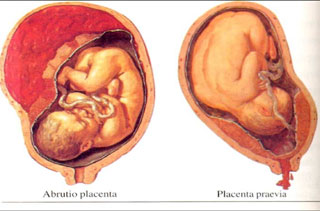
Heart Diseases
Symptoms which should alert the patients are:
- Shortness of breath.
- Patient feels easily tired after doing little work.
- Fainting spells
- Chest pain, heaviness in chest
- Blood in sputum
- Swelling in legs not relived by rest as seen in normal pregnancy.
- Patient might feel better in sitting posture than in lying posture.
- At times patients has to get up from sleep as patient feels bresthless.
Happy Patients Happy Doctors
